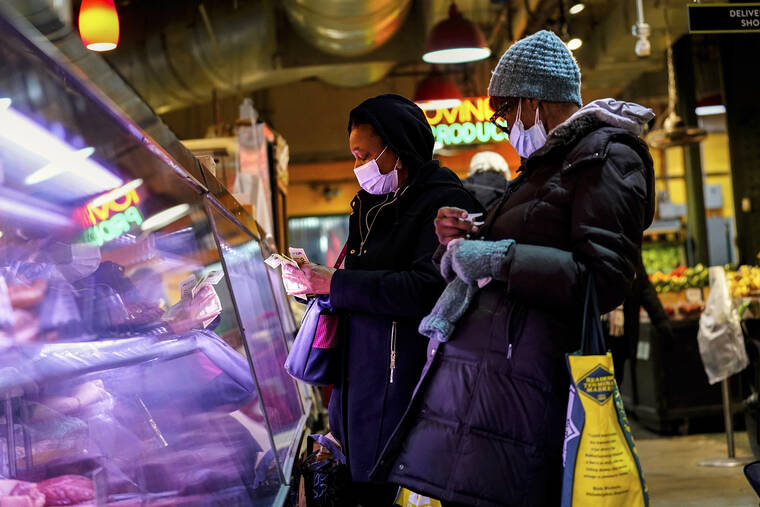It’s not over: COVID-19 cases are on the rise again in US
The U.S. may be heading into another COVID-19 surge, with cases rising nationally and in most states after a two-month decline. Experts don’t know how high the mountain will grow, but they don’t expect a peak nearly as high as the last one, when the contagious omicron version of the coronavirus ripped through the population. Still, experts warn the coming wave will wash across the nation and push up hospitalizations in a growing number of states, especially those with low vaccination rates, in the coming weeks. Most cases are now being caused by a subvariant known as BA.2 that is thought to be 30% more contagious.
Yet again, the U.S. is trudging into what could be another COVID-19 surge, with cases rising nationally and in most states after a two-month decline.
ADVERTISING
One big unknown? “We don’t know how high that mountain’s gonna grow,” said Dr. Stuart Campbell Ray, an infectious disease expert at Johns Hopkins University.
No one expects a peak nearly as high as the last one, when the contagious omicron version of the coronavirus ripped through the population.
But experts warn that the coming wave – caused by a mutant called BA.2 that’s thought to be about 30% more contagious – will wash across the nation. They worry that hospitalizations, which are already ticking up in some parts of the Northeast, will rise in a growing number of states in the coming weeks. And the case wave will be bigger than it looks, they say, because reported numbers are vast undercounts as more people test at home without reporting their infections or skip testing altogether.
At the height of the previous omicron surge, reported daily cases reached into the hundreds of thousands. As of Thursday, the seven-day rolling average for daily new cases rose to 39,521, up from 30,724 two weeks earlier, according to data from Johns Hopkins collected by The Associated Press.
Dr. Eric Topol, head of Scripps Research Translational Institute, said the numbers will likely keep growing until the surge reaches about a quarter the height of the last “monstrous” one. BA.2 may well have the same effect in the U.S. as it did in Israel, where it created a “bump” in the chart measuring cases, he said.
Keeping the surge somewhat in check, experts said, is a higher level of immunity in the U.S. from vaccination or past infection compared with early winter.
But Ray said the U.S. could wind up looking like Europe, where the BA.2 surge was “substantial” in some places that had comparable levels of immunity. “We could have a substantial surge here,” he said.
Both experts said BA.2 will move through the country gradually. The Northeast has been hit hardest so far — with more than 90% of new infections caused by BA.2 last week compared with 86% nationally. As of Thursday, the highest rates of new COVID cases per capita over the past 14 days were in Vermont, Rhode Island, Alaska, New York and Massachusetts. In Washington, D.C., which also ranks in the top 10 for rates of new cases, Howard University announced it was moving most undergraduate classes online for the rest of the semester because of “a significant increase in COVID-19 positivity” in the district and on campus.
Some states, such as Rhode Island and New Hampshire, saw the average of daily new cases rise by more than 100% in two weeks, according to Johns Hopkins data.
In New Hampshire, the increase in cases comes two weeks after the closure of all 11 state-managed vaccination sites, and the governor is being pressured by some advocates to reverse course.
Joseph Wendelken, spokesperson for the Rhode Island Department of Health, said the metric they are most focused on right now is hospitalizations, which remain relatively low. About 55 COVID-19 patients are hospitalized, compared with more than 600 at one point in the pandemic.
Officials credit high vaccination rates. State statistics show 99% of Rhode Island adults are at least partially vaccinated and 48% have gotten the booster dose that scientists say is key in protecting against severe illness with omicron.
Vermont also has relatively high levels of vaccination and fewer patients in the hospital than during the height of the first omicron wave. But Dr. Mark Levine, the health commissioner there, said hospitalizations and the numbers of patients in intensive care units are both up slightly, although deaths have not risen.


